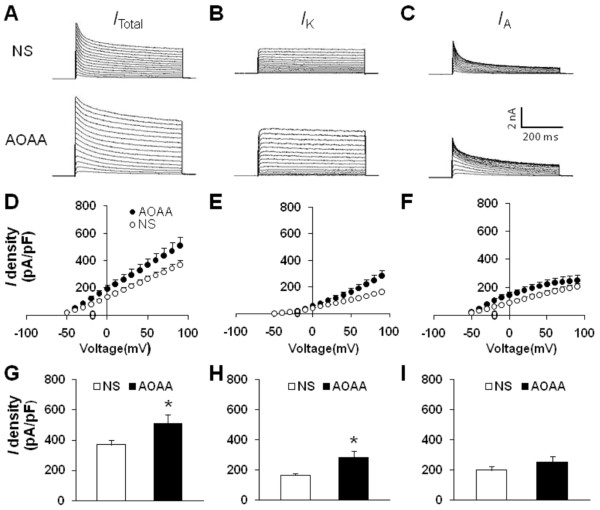Figure 8.
CBS inhibitor AOAA increases voltage-gated potassium current. Currents were measured at different holding potentials. For total voltage-gated potassium current (ITotal), the membrane potential was held at -100 mV and voltage steps were from -50 to +90 mV with10-mV increments and 400 ms duration. For sustained KV current (IK), the membrane potential was held at -50 mV and the voltage steps were the same as above. Currents generated by these two protocols were subtracted to produce IA. (A) Examples of total KV currents recorded from NS (top) and AOAA-treated CFA rats (bottom). (B) Examples of IK recorded from NS (top) and AOAA-treated CFA rats (bottom). (C) Examples of IA recorded from NS (top) and AOAA-treated CFA rats (bottom). The peak ITotal(D), IK(E) and IA(F) versus voltages (I-V) were plotted from cells acutely dissociated from CFA rats treated with NS or AOAA. Bar graphs showed the mean peak ITotal(G), IK(H), and IK(I) densities from NS and AOAA-treated CFA rats. The current density (pA/pF) was calculated by dividing the current amplitude by cell membrane capacitance. AOAA treatment caused a significant increase in ITotal (G, *p < 0.05, compared with NS, two sample t-Test). The IK density was significantly increased (H, *p < 0.05, compared with NS, two sample t-Test) while the IA was not altered significantly after AOAA treatment in CFA rats (I).

